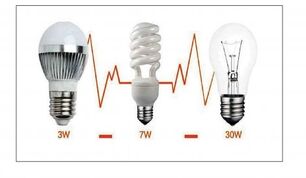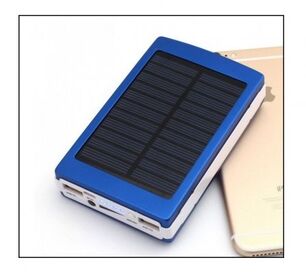Consumers are driven by environmental factors such as rising energy prices and saving electricity. Consumers may view the environment as a whimsical or fraudulent act, but if it comes with an additional price, it must be considered.
Of course, energy will have nowhere to go, energy consumption will increase, the amount of energy will increase, and the most harmful energy will be replaced. Saving does not mean limiting, but wise use. You can spend one hundred kilowatts economically and waste one hundred watts.
Saving energy is achieved through rational use (not chaos), which is the result of planned activities. Moreover, the fraudulent methods and "methods" advertised on the Internet are sometimes irrelevant to preservation. These methods can only cause fire and electric shock.
Reduced energy consumption
All electricity users can be classified in some way according to the energy consumed (energy intensity). For example, in this way, in descending order:
- heating device;
- Lighting equipment;
- electric motor;
- Computer Science;
- Electronic equipment and communication equipment.
Even at the household level, this classification is reasonable: kettles, various types of stove-grills, toasters, electric stoves, then electric irons, dryers all consume most of the electricity. A lot of energy is spent on lighting. Lighting competes with refrigerators (compressor motors).
Ordinary household PCs also consume a lot, which is quite a competitor of refrigerators. In this context, televisions, security alarms and fire alarms, and chargers for mobile communication devices consume the least.
Converting electricity to heat is the most "obvious" result achievable, but it can also be fully achieved. If this conversion is needed. The efficiency of iron is almost 100%. For the light source, the situation is much worse-even for the LED lamp, the efficiency is only close to 15% (we can say that only for the quantum phenomenon in the LED semiconductor crystal is close to 100%, the rest is spent on the heating wire and otherEquipment (drive) loss).
Save heating equipment
How to save energy without denying the interests of civilization? As we have seen, since the most important thing for heating equipment is to "get electricity", this is the most important resource for saving energy. For them, energy-saving methods in daily life are indirect, but equally important. First, the heat must be fully utilized. For example, it is extremely unwise to boil water in a metal tank in a refrigerator that does not require heating. It is best to do this to spread the heat throughout the residential area.
Due to the good thermal insulation of the place, the heat generated must be completely retained and retained for as long as possible. In European countries, such as Germany, they have even been fined for poor insulation.
Energy payment and heat storage capacity with multiple tariffs, the most convenient option will be the night operation mode of water heaters and other heating equipment. During the day, the heat will remain at a sufficient level. This is especially beneficial if residents are working or studying during the day. In addition, by consuming energy at night, consumers can balance the load on the grid, which has a positive impact on its maintainability and operating costs. This makes us hope for cheaper prices.
Save lighting

Let's start with reminders, remember to turn off the lights where you don't need them. And carefully consider the location of light sources (preferably with the help of professionals) in all rooms, even if they are utility rooms. Then, we turn to the light source that exists in our time.
First of all, it should be pointed out that we are living in the fertile period of incandescent lamps that refuse, and the heat of incandescent lamps exceeds their luminous ability. The extensive use of fluorescent light sources (daylight) can save two to three times the energy, which is very energy saving.
Previously (since the 1970s) fluorescent lamps made in the form of 40 and 80 W tubes have been widely used, but they are mainly used in public and industrial buildings.
The modern "energy-saving" household fluorescent lamp in the E27 base is the same tube as the mercury vapor and phosphor on the inner surface of the glass tube. But they are twisted into a circular spiral and connected by a miniature electronic ballast located in the base, which has the same function as the choke coil and gas discharge starter previously implemented.
But fluorescent lamps have been squeezed by LED lamps, and they consume two to three times less energy than fluorescent lamps with the same luminous flux. They are still more expensive than other types of lamps, but the market has not been saturated with new products. Because it can save a lot of costs, it can quickly recover costs.
Both fluorescent lamps and LED bulbs have a very broad spectrum close to sunlight. This is because the main light source of ultraviolet light is used in both cases-LED lights also use light, and ultraviolet light is converted into a mixture of all colors of visible light. Only in LED lamps, ultraviolet rays are not produced by mercury vapor atoms, but by semiconductor crystals.
When solving lighting problems, another way to save energy is to turn it on and off automatically. People are forgetful, but skills are not. The use of dimmers (dimming equipment), photoelectric relays, timers and motion sensors will minimize unnecessary lighting costs.
All these products are sold in stores with warranty, certificates and instructions, and are no longer proprietary handicrafts only for qualified amateur radio enthusiasts.
Electric motor
Electric motors are mainly found in refrigerators, washing machines and air conditioners in daily life. There are also pumps for heating systems and pumps for wells. All other situations: coffee grinders, electric drills, etc. are not worthy of attention because they are rarely opened and the opening time is short.
By regularly turning off the motor (refrigerator and air conditioner) or using the inverter of the asynchronous motor, the energy consumption of the motor can be reduced during continuous operation.
The latter is sometimes used to control pump motors in water and heating systems. Since the operation of the electric motor is usually accompanied by heat (cold), the fact of saving measures is that there are fewer reasons to open the engine: keep the doors, vents, refrigerator and freezer doors closed.
Electric motors consume relatively little power in daily life-about a few hundred watts or even tens of watts. Here you can ignore the infamous "cosine phi" because consumers do not need to pay for reactive power.
However, asynchronous motors have a characteristic: larger starting current, which is 5-7 times the rated current. This shows that the fewer times the motor starts, the better, and the use of frequency converters can be justified under acceptable circumstances (refrigerators, especially air conditioners, are not suitable for this). And don't put the hot pot in the refrigerator.
Motors in household appliances can be classified as follows according to power and duty cycle (time fraction in the duty cycle):
- Refrigerator, air conditioner (150–450 W, 20–50%);
- Heat pump (60–200 W, 40–100%);
- Kitchen appliances (50-500 W, short-term);
- Fan (10-30 watts, 100% maximum).
Submersible water pumps are rarely used and have high power. They are used in the private houses and villas of the wealthy. But even there, economic issues are not the last issue. Therefore, the operation of pumps in such systems can be optimized through hydraulic accumulators, frequency converters, and controllers that control water supply operations. Everything will happen automatically.
Computer, TV and phone chargers

The reason why gaming computers can solve the problem well is not only because of the fast processor speed, but also because the powerful video card works 20 hours a day (the game time is fast, starting from elementary school students, you may notYou will notice how pensions are paid). . . Some people also use video cards to make money.
A typical office computer in quiet mode consumes about 200 W of power, and a notebook computer consumes 40-60 W. This is comparable to TV, but it doesn't make much sense. Nevertheless, there is no harm in managing the power supply of such devices, especially since such functions are already provided in modern smart electronic devices.
For chargers for phones and other mobile devices, they can be powered by "alternative" sources: solar panels and small wind turbines powered by suitable converters (including, of course, 5, 12 and 20 VDC power supply) are available. To charge the laptop. )
Alternative sources in daily life are still not extensive, their capacity is very limited, and they are expensive. However, it must start somewhere, and recommendations for energy saving in daily life should also take this into account.
























